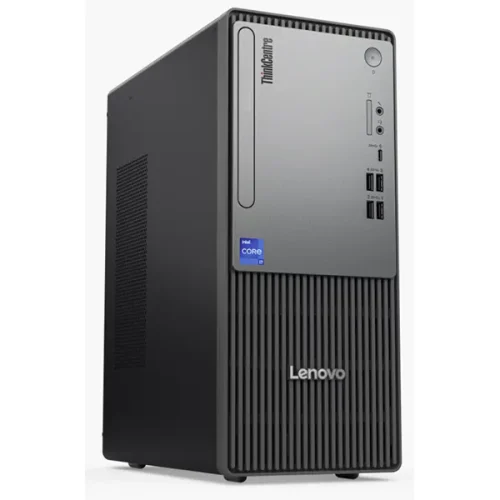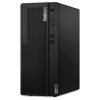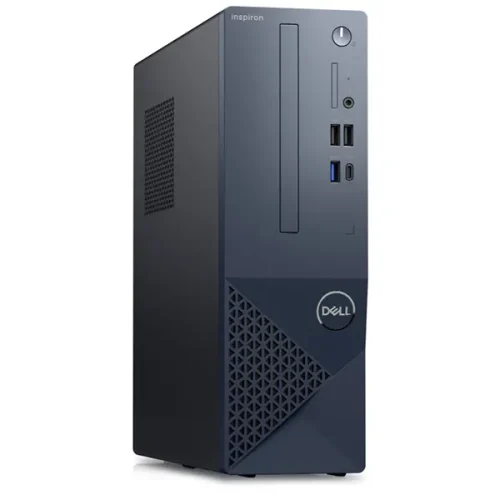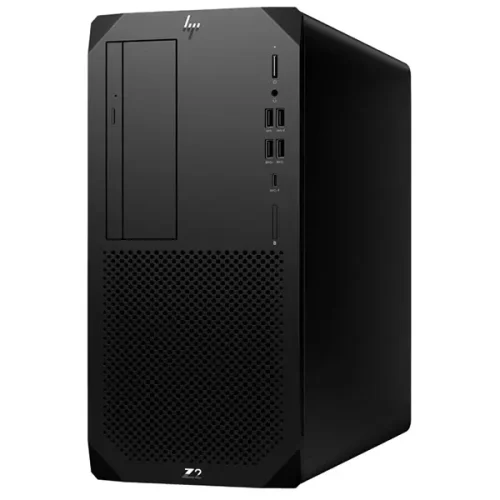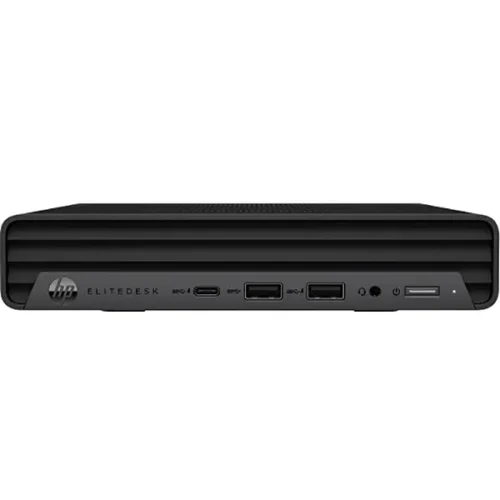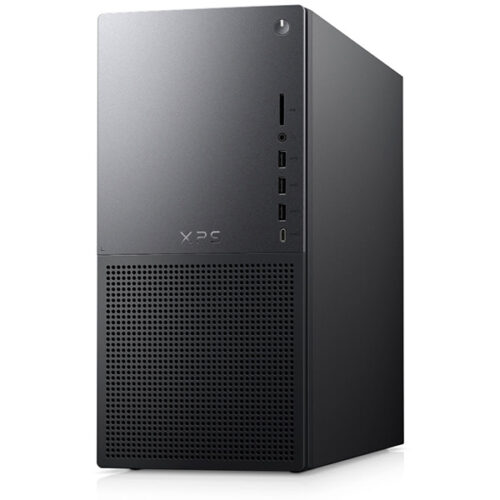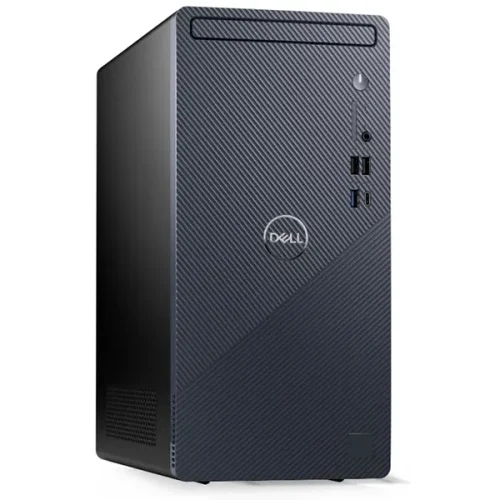LENOVO ThinkCentre neo 50t Gen 5 (12UB003DTB)
- CPU Intel Core i5-14400 (20M Cache, up to 4.70 GHz)
- RAM 16GB DDR5 4800MHz
- Harddisk 512GB SSD M.2 2280 PCIe 4.0×4 NVMe Opal 2.0
- Optical No
- LAN/ Wifi Intel Wi-Fi 6 AX201, 802.11ax 2×2 + BT5.2
- Graphic Onboard
- Port 1 x DisplayPort, 1 x HDMI, 1 x VGA
- Monitor No
- OS Windows 11 Pro
- Warranty 3 Years Onsite by LENOVO
- เลือกดูสินค้าอื่นในหมวดเดียวกัน
The Lenovo ThinkCentre neo 50t Gen 5 is a business-oriented tower desktop PC that was officially announced and started becoming available around June 2025. This model is designed for everyday office tasks, productivity, and general business applications, offering reliable performance and essential features in a compact tower form factor. It is an update to the neo 50t series, bringing newer generation Intel processors and updated connectivity.
Here’s a comprehensive overview:
1. Design and Form Factor:
- Compact Tower (13.6L or 14L): The “t” in 50t refers to “tower,” and this generation maintains a relatively compact design. Its approximate dimensions are (), making it suitable for various office environments where space might be a consideration.
- Business Aesthetic: It typically features a professional and understated “Cloud Grey” or “Black” color, designed to blend seamlessly into a corporate setting. The chassis is often designed for toolless access for easier upgrades and maintenance.
- Standard Peripherals: Usually comes bundled with a traditional USB Calliope keyboard and mouse.
2. Processors and Graphics:
- Intel 13th and 14th Gen Processors: The neo 50t Gen 5 leverages Intel’s 13th Generation Raptor Lake and the newer 14th Generation Raptor Lake Refresh processors, offering a range of performance options.6 Common CPU choices include:
- Intel Core i3-13100 / i3-14100: For basic office tasks, web Browse, and email.
- Intel Core i5-13400 / i5-14400: A popular choice for multitasking, office suites, and general productivity, featuring a hybrid architecture (Performance-cores + Efficient-cores).
- Intel Core i7-13700 / i7-14700: For more demanding applications, heavy multitasking, and potentially light content creation.
- It may also include lower-end “Intel 300 Processor” (formerly Pentium/Celeron branding).
- Integrated Intel UHD Graphics (730 or 770): Most standard configurations will utilize the integrated graphics built into the Intel CPU. These are perfectly adequate for business applications, presentations, video conferencing, and driving multiple displays.
- Optional Entry-Level Discrete Graphics: For tasks requiring a bit more graphical muscle (e.g., light design work, basic video editing, or running multiple high-resolution displays more smoothly), some configurations may offer:
- Intel Arc A310 (4GB GDDR6)
- NVIDIA GeForce RTX 3050 (6GB GDDR6) (Less common due to chassis size/power, but possible in specific higher-end SKUs).
- No Dedicated NPU (for AI): While the 14th Gen “Raptor Lake Refresh” processors are present, they are not part of the “Core Ultra” series and therefore do not feature a dedicated Neural Processing Unit (NPU) for on-device AI acceleration. AI tasks will be handled by the CPU and GPU.
3. Memory and Storage:
- RAM: Supports DDR5 UDIMM RAM, specifically up to DDR5-5600MHz.
- It comes with two DDR5 UDIMM slots, enabling dual-channel memory for enhanced performance.
- The maximum supported RAM is typically 64GB DDR5, providing ample memory for even demanding multitasking scenarios. Factory configurations often start at 8GB or 16GB
- Storage: Offers flexible storage options for speed and capacity:
- PCIe 4.0 NVMe M.2 SSD: The primary storage for fast boot times and application loading. Common capacities are 256GB, 512GB, or 1TB. It usually has one M.2 2280 slot.
- 3.5-inch HDD: For mass storage of documents, media, and backups. Up to 2TB is common. It usually supports one 3.5-inch HDD and potentially an additional 2.5-inch HDD/SSD (self-upgrade).
- The system can support up to three drives (1x 3.5″ HDD + 1x 2.5″ HDD + 1x M.2 SSD).
4. Expansion Slots:
- 1x PCIe 3.0 x16, full-height: For a dedicated graphics card or other expansion cards requiring high bandwidth.
- 1x PCIe 3.0 x1, full-height: For smaller expansion cards (e.g., an additional network card, if needed).
- 2x M.2 slots: One for WLAN (Wi-Fi card) and one for the SSD.
5. Connectivity:
- Front Ports (Convenient Access):
- 1x USB-C (USB 5Gbps / USB 3.2 Gen 1) with data transfer and often 15W charging.
- 4x USB-A (USB 5Gbps / USB 3.2 Gen 1)
- 1x Headphone / microphone combo jack (3.5mm)
- 1x Microphone (3.5mm)
- (Optional) 3-in-1 Card Reader (SD, SDHC, SDXC)
- Rear Ports:
- 4x USB-A (Hi-Speed USB / USB 2.0)
- 1x HDMI 2.1 TMDS
- 1x DisplayPort™ 1.4a (HBR2)
- 1x VGA (for legacy monitor compatibility, crucial for many business setups)
- 1x Ethernet (RJ-45) for Gigabit LAN
- 1x Line-out (3.5mm) audio
- (Optional) PS/2 ports for keyboard and mouse
- (Optional) Serial port
- Wireless Connectivity:
- Wi-Fi 6 (802.11ax 2×2) or Wi-Fi 6E (802.11ax 2×2): Provides fast and reliable wireless networking. Wi-Fi 6E offers the less congested 6GHz band.
- Bluetooth 5.2: For connecting wireless peripherals.
- Optical Drive (Optional): Some configurations may include a slim DVD±RW drive.
6. Operating System and Security:
- Windows 11 Pro or Windows 11 Home: Pre-installed for a modern and secure operating environment.
- ThinkShield Security: A suite of hardware and software security features for business, including:
- Discrete TPM 2.0 (Trusted Platform Module)
- Kensington Security Slot
- Padlock loop
- Chassis intrusion switch (optional)
- Smart USB Protection (BIOS-level control over USB ports)
- MIL-STD-810H military test passed: Indicates durability and reliability under various environmental conditions (e.g., high/low temperature, humidity, shock, vibration).
7. Power Supply Unit (PSU):
- Typically comes with efficient power supply units, such as 180W, 260W, or 310W (often 90% or 92% efficient), chosen based on the system’s configuration (especially if a discrete GPU is included).
Target Audience:
The Lenovo ThinkCentre neo 50t Gen 5 is an ideal choice for:
- Small to Medium Businesses (SMBs): Providing reliable, manageable, and secure desktops for employees.
- Corporate Environments: Offering standardized, performant workstations for general office tasks.
- Educational Institutions: Durable and efficient computers for labs and administrative use.
- Home Office Users: Who need a dependable desktop for productivity without requiring high-end gaming or content creation capabilities.
- Users Requiring Legacy Connectivity: The inclusion of VGA, and optional PS/2 and serial ports, can be crucial for businesses still using older peripherals or monitors.

